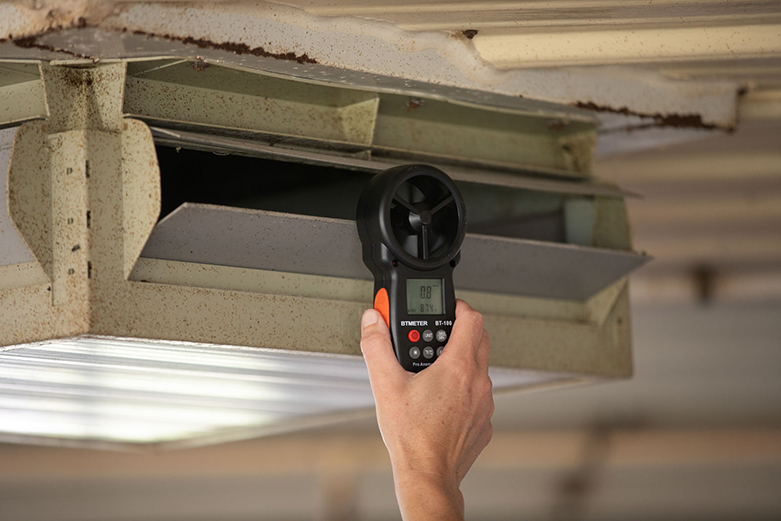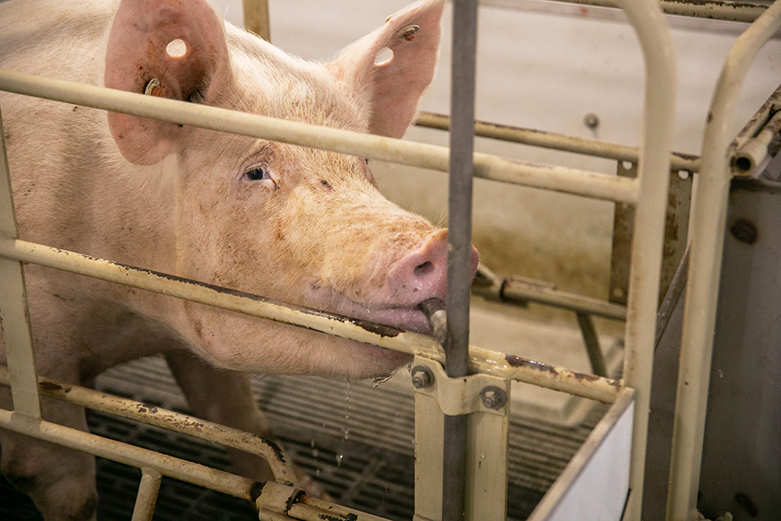Manage air exchange and temperature separately to optimize swine herd productivity.
Ventilation is critical in achieving top performance for any pig herd. When environmental conditions are not optimal, pigs won’t reach their maximum genetic potential – and farm profits will not be as high as they could be.
To prevent humidity and gas issues, fresh air intake must be balanced with comfortable temperatures for ideal pig activity levels, feed intake and growth rates. One strategy for success is to manage air exchange and barn temperature separately. Use these best practices for barn ventilation management to maximize the performance of your pigs.
Do you need to know what is the ideal temperature for pigs? Read about that here.
How barn ventilation impacts humidity
PIC recommends maintaining relative humidity between 50% and 65% to support air quality for pigs and people, as well as for supporting a long barn lifespan. Humidity that is too low or too high has consequences.
Low humidity can cause an increase of:
- Dust
- Bacterial or viral load
- Risk of respiratory infections
- Gas levels
- Risk of overspending for liquified petroleum gas
High humidity can increase the risk of:
- Water condensation inside the barn
- Bacterial, viral or fungal load
- Pigs’ sensitivity to heat
- Wet flooring, which can lead to slips or falls
- Poor ventilation rates
How pig barn ventilation works
Air is exchanged as a function of static pressure, which is the difference between indoor and outdoor air pressure. Static pressure promotes air exchange, which helps remove excess humidity from the barn.
Static pressure and air speed are directly correlated. The amount of air being removed by fans affects how much air comes in through the air inlets. Operating fans at the desired airspeed will produce the desired static pressure, which is between 0.05 – 0.1 (in. water).
Manage air exchange and pig barn temperature separately
Optimal pig performance requires good air quality. A key to good pig barn ventilation management is to manage air exchange and temperature separately. Whenever the barn temperature falls below the temperature set point, the barn ventilation system must still operate at the minimum setting. Additionally, keeping a minimum airspeed will minimize heat loss.
Cold air is denser than warm air and will therefore fall faster than warm air when it enters the barn. This cold air entering the inlets will drop quickly to pig level and exit through the outlet fans unless the air is moving at a slow enough speed to mix with warm air before it reaches the pigs. Adequate air speed can be achieved by setting inlets correctly and matching them with fan extraction rates.
Correct inlet settings allow air to move at desired speeds of 600 to 800 FPM (feet per minute) across the barn ceiling. This avoids creating a draft over the pigs and allows good air mixing to remove humidity from the barn through exhaust fans.
Increased energy costs, chilled pigs and wet floors can result when inlet openings don’t match the fan extraction rate (CFM). Inlet openings that are too tight can result in frozen inlets.

Managing air exchange and temperature separately can help you maintain the ideal barn environment for pigs, including the right temperature and humidity. You can keep pigs comfortable for optimal performance while managing energy costs.
What is the ideal temperature for pigs at different growth phases? Find out here.






